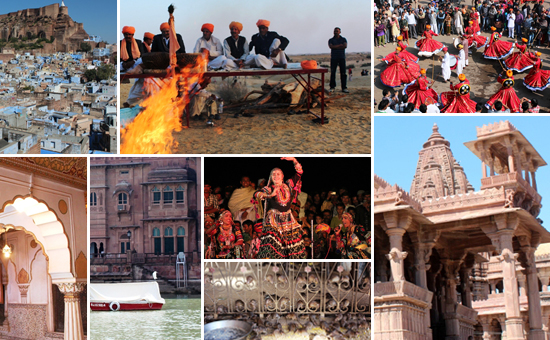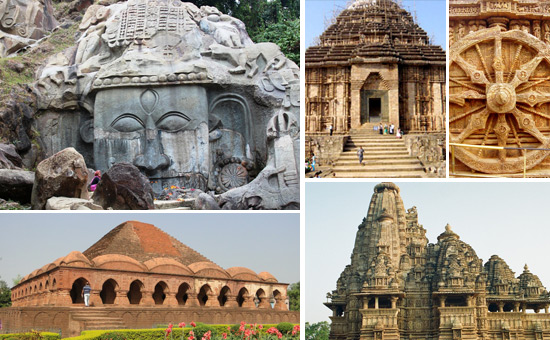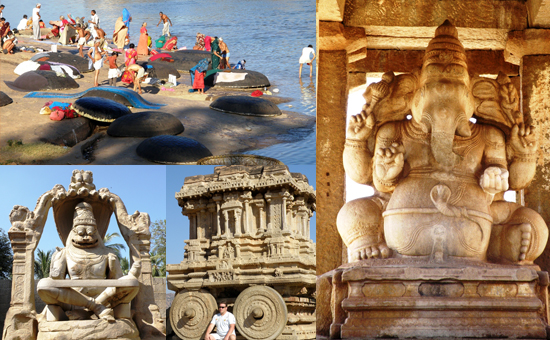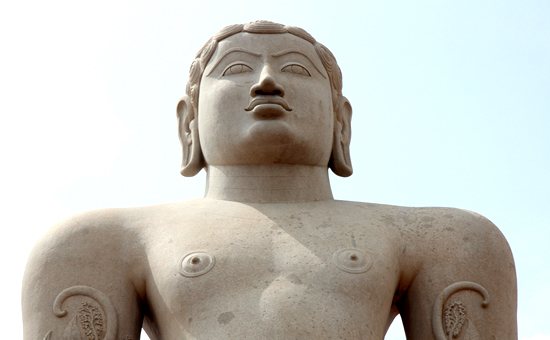- Article gives features of new map, why Pakistan issued it and UN resolutions are redundant. Next, what must India do? Lastly, what is the deeper problem with Pakistan? Unless there is a mindset change, naya map means nothing.
One year after the revocaion of Article 370 and on th eve of the Ram Mandir Bhoomi Puja, Imran Khan, prime minister of the Islamic Republic of Pakistan released a new map of his country.
According to this Dawn report , “The inauguration of the new map is, moreover, believed to be a response to India, which launched its own political map on Oct 31 last year.”
It was only in 2019 that out of the Indian state of Jammu and
Kashmir (J&K) were created Union Territories of Jammu and Kashmir and Ladakh.
Actually the areas included in 2019 Indian map were based on
the areas ruled by Shriman Indar Mahander Rajrajeshwar Maharajadhiraj Shri Hari Singh
Ji Jammu and Kashmir Naresh Tatha Tibet
and Deshadhipathi Ruler of Jammu and Kashmir. The 2019 map included UT’s of J&K and Ladakh, Azad Kashmir, Aksai
Chin and Gilgit-Baltistan.
Highlights of the new Pakistan map and what was spoken at its release are –
1. PM Khan said the new map is the “first step” towards resolution of the nearly 73-year-old dispute.
2. The map shows Kashmir as a "disputed territory and states that the final status will be decided in line with the relevant United Nations Security Council (UNSC) resolutions and aspirations of the people of held Kashmir.
3. Entire Gilgit-Baltistan and Kashmir had been given in the same green colour to show that it’s one territory. That surely is a first.
4. Map is not clear if Ladakh is part of Kashmir.
5. A claim is now made on Junagadh and Manavadar.
6. An administrative boundary separating Azad Jammu Kashmir
and Gilgit Baltistan has also been inserted in the map.
7.
The Line of Control has been extended across Jammu and Kashmir and connected
with the Chinese border (unilaterally). Thus, Pakistan believes Siachen is theirs. (Note
that the Line of Control came into effect in 1972 after the Simla
Agreement was signed by Indira Gandhi and Zulfiqar Bhutto).
8. Claim on Sir Creek. “An official explained that the new map represented the position on Sir Creek, according to Sindh government’s agreement with the State of Kutch in 1914, demarcating the boundary on the Eastern Bank of Sir Creek.”
From the above it is apparent that Pakistan is raking up old
issues and opening all fronts against India simultaneously ie Kashmir, Sir Creek,
Siachen and Junagarh.
Pakistan’s new map, comes days after Nepal circulated a new map. Their moves seem to indicate a Chinese influence. One day after Pakistan released its new map, Chinese foreign ministry spokesperson Wang Wenbin said India’s decision to scrap Article 370 and convert J&K into two Union Territories is illegal.
 Marwar is awesome during winters.
Marwar is awesome during winters.
Why did Pakistan release a new map?
Here could be the reasons.
1. Pakistan has realized that it has, since the abrogation of Article 370, lost the propaganda battle on J&K. Perhaps, the Pakis never expected Modi2 to abrogate Article 370 and went into slumber because of a series of moves by the Indian government. Further, being globally condemned for exporting terrorism and the Balakot Air Strikes might have put the Pakis on the defensive.
2. It is also possible that feeling the heat from Pak based terrorist outfits, Imran Khan’s government has decided to take up the alleged cause of Kashmiris again.
3. Further, by not making any reference to Ladakh in the map it is telling China, you help us get Kashmir Valley and the whole of Ladakh is yours. This way we complete the unfulfilled agenda of partition, meaning physical control over Muslim majority Kashmir Valley, and you secure CPEC.
4. Pakistan seeks to divert international attention from China’s acts of omission ie Covid19 and transgression into Ladakh, by raising the Kashmir issue.
Remember Pakistan used Godhra to successfully divert world attention from it post September 11. Read by Col Anil Athale, Did
Godhra Save Pakistan?
5. It is possible that Pakistan is feeling ignored post Galwan.
After all, Pakistan occupied significant mind space in India since 1947 because of partition and its export of terrorism. That has now changed because China is widely acknowledged as India’s enemy number ONE.
6. Globally, Pakistan is now associated with terrorism.
By talking of UN resolutions and aspirations of Kashmiri
people it seeks to position terrorism in Kashmir as a freedom movement.
7. In order to please its all-weather friend China, Pakistan hopes that release of new map would divert Indian attention from the Chinese transgressions in Ladakh and help Pakistan occupy mind space in India once again.
8. By raising the issue of Junagarh, it is telling India and Indian Muslims that the issues arising out of Partition of India are still open?
After all Pakistan sees itself as the defender of the Indian Muslims
and their spokesperson in the international fora. This Dawn report
title of August 5, BJP sees August 5 as the conquest of Muslims in India and
Kashmir on the same day, is
provocative to say the least.
It also means that the
Pakistani frustration around 1947 on Muslim-majority states of J&K,
Junagarh and Hyderabad not becoming its part continue to simmer.
9. Release of a new map shows that Pakistan is reacting to Indian moves. Earlier, it was the reverse.
 There is more to India than the Taj-East.
There is more to India than the Taj-East.
So what must India do?
1. It must not give too much importance to this new map. Instead focus on China and China-Pak moves.
2. India must focus on becoming an economic and military power.
3. By reiterating that Siachen is theirs and in light of Chinese transgressions in Ladakh, India must expect a joint
China Pakistan attack to take control of Siachen glacier.
4. If Pakistan is not part of the Indian discourse like earlier, it will create a crisis of identity for Pakistan. That is theirs, not India’s problem.
5. Simultaneously, monitor how Bollywood shows Pakistan and Pakistanis.
Here is what Professor
Dheeraj Sharma of the Indian Institute of Management, Ahmedabad, wrote in the Hindustan Times, "I am not a regular movie viewer. However, I was cajoled into watching the Salman Khan-starrer Bajrangi Bhaijaan and I was surprised at the director's treatment of the subject. The majority of Indians were projected as narrow-minded, conservative, and discriminating. However, a majority of the Pakistanis were shown as open-minded and non-discriminating. This led me to empirically examine if this portrayal is a one-off presentation of stereo typicality or largely prevalent in Bollywood films. In addition, we examined 20 Bollywood movies that had Pakistan as the setting. In 18 of those films, Pakistanis were projected as welcoming, courteous, open-minded and courageous."
6. India must consistently support the liberation of Baluchistan.
7. On UN Resolutions some
jogging of memory is required.
On 5/1/1949 the U.N. Commission for India and Pakistan proposed a resolution whereby the future of J&K would be determined by a democratic method of a plebiscite conducted by India under the UN’s auspices but after Pakistan withdrew its troops from the State and disbanding of Azad Kashmir forces.
U.N. resolution provides that Pakistan was to withdraw its troops from
the State (Mirpur, Muzzafarabad, Gilgit and
Baltistan. Since Pakistan has not withdrawn its troops, India could not conduct
a plebiscite.
Pakistan has not complied with the UN
resolution? According to former Chief Justice of India M C Mahajan the Instrument
of Accession and the Indian
Independence Act 1947, of the British Parliament gave no legal or constitutional authority to
Nehru or Mountbatten, the then governor general, to make promise of plebiscite.
Justice A S Anand presented a series of arguments to conclude, ‘This position brings one to the conclusion that to hold a plebiscite would be repugnant to the Constitution of India and J&K’. The Constitution of Jammu and Kashmir Its
Development and Comments, Third Edition 1998 pg 85
By the Simla Agreement of 1972, India and Pakistan
decided to settle all differences by peaceful means through bilateral talks, the
ceasefire line in J&K became the line of control. The UN resolutions, thus
became irrelevant.
Harping on UN
resolutions in 2020 mean nothing since Pakistan has not complied with
conditions imposed and is also a signatory to the Simla Agreement.
Questioning the accession of J&K to India or scrapping of Art 370 might please Imran Khan’s domestic audience but means little beyond that.
 Hampi is a must visit.
Hampi is a must visit.
Actually the problem with Pakistan goes much deeper
Super cop the late KPS Gill, wrote while commenting on Indo-Pak relations, “The conflict over Kashmir is not, as is widely believed, a quarrel over territory; it is, rather, an irreducible conflict between two fundamentally incompatible ideologies - a pluralistic democratic ideology, on India's part; and an authoritarian-fundamentalist-exclusionary Islamist ideology that asserts that different belief systems cannot coexist within the same political order. A permanent peace in South Asia will only result after one or the other of these ideologies succumbs - and these are crucial to national identity, consciousness, and even the existence of these two nation states.”
Also, Pakistan continues to have artificially
nurtured memories of Muslim superiority.
It is also possible that after being in office for
nearly two years Imran Khan is frustrated with the dominance of the Army and has
realized that they have indeed got a moth-eaten Pakistan so the new map is a
way to keep its population humored and divert attention.
In this context, it is worth recalling Dr Ambedkar’s writings of 1941. Babasaheb justified the creation of Pakistan by stating that the Pakistan area,
which was the main recruiting ground for the then Indian army, contributed very
little to the Indian exchequer but large sums were spent on the army.
Revenue Contribution to Exchequer-Pakistan & Hindustan
|
No
|
Province
|
Rs
crs
|
Rs
crs
|
| |
Pakistan Area
|
|
7.13
|
|
1.
|
Punjab,
N.W.F.P. & Baluchistan
|
1.27
|
|
|
2.
|
Sind
|
5.86
|
|
| |
Hindustan
|
|
51.9
|
|
1.
|
Bombay
|
22.53
|
|
|
2.
|
Madras
|
9.53
|
|
|
3.
|
Bengal (only ½ revenue shown based on population)
|
12.00
|
|
|
4.
|
Others
|
7.85
|
|
Source-Thoughts on Pakistan by Dr
Ambedkar.
The main
contribution comes from the provinces of Hindustan. Not only do the Pakistani
provinces contribute very little to the Central Government but they receive a
great deal. Out of the total central government revenues of Rs 121 crs Rs 52
crs is spent on the army annually.
Perhaps, Imran
Khan has realized that modern day Pakistan generates very little revenue and
there is not much he can do about it hence the bitterness.
 Bahubali, Sravanbelgola.
Bahubali, Sravanbelgola.
It is also one
of the many reasons why Pakistan repeatedly tries to provoke Indian Muslims
(India has to fail).
By provoking
Indian Muslims (for e.g. Dawn report above) Pakistan seems to ask them how they can live in a country which is not Dar-ul-Islam (where Islam is dominant). Knowing Pakistan’s reputation, would Indian Muslims want to be part of such a nation?
Actually the
problem with Pakistan goes beyond releasing new maps. A country born out of
hatred cannot sustain itself without continuously hating the other.
Unless
Pakistan learns to love itself, nothing will change even with a naya map.
Author is a Chartered Accountant.
Also read, Who
was responsible for Partition?